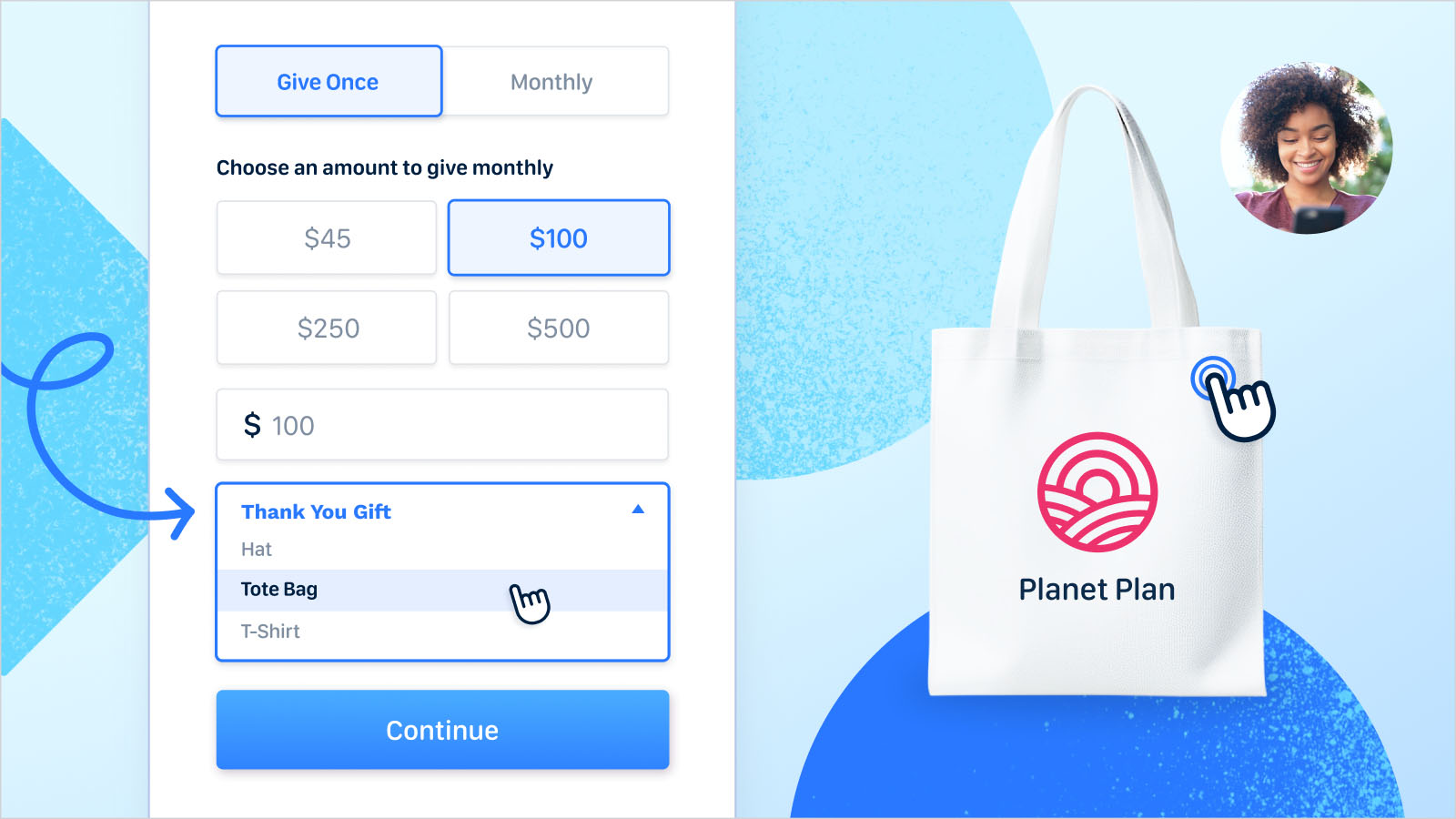Here at Funraise, we like our fundraising with a dollop of magic and a dash of sparkle. Today, however, we’re here for something far less dazzling: taxes. Nonprofit friend, it’s time to take a good hard look at recent 1099-K changes that will likely impact your community’s filings. Whether you need a crash course on the basics or are looking for a jumping-off point to communicate these changes to staff and volunteers, you’re in the right place.
Oh, and before we go any further, please keep in mind that we are not legal or tax experts, and as such, you should speak to an actual, bonafide legal or tax expert about this stuff. We’re just breaking down the problems and offering possible solutions as we see them, from our vantage point as fundraisers and fundraising software developers. Good? Good. Let’s get taxable!
Wait, what is a 1099-K?
A 1099-K is an IRS tax form used to report electronic and third-party network transactions. This includes payments from debit cards, credit cards, and payment platforms like Google Pay or Venmo. In fact, the full name of the form says it all: Form 1099-K, Payment Card and Third Party Network Transactions.
And who gets a 1099-K?
Generally, you might receive a 1099-K if you:
- Own a small business.
- Are self-employed.
- Work in the gig economy.
- Have a side hustle.
- Sell personal items for profit.
And what 1099-K reporting changes are you talking about?
While it doesn’t sound particularly riveting, the 1099-K form has made a lot of headlines lately. Here’s why: Previously, folks only received 1099-K’s if their payments from third-party payment platforms or electronic transactions totaled more than $20,000 and more than 200 transactions. Then, in 2022, the IRS sharply decreased that reporting threshold, announcing that anyone making more than $600 would receive a 1099-K. Plus, there would be no minimum transaction amount. There was an outcry, and they pushed back implementation to 2023, but it’s actually happening.
Wondering why Uncle Sam’s making these changes all of a sudden? It’s all thanks to the tax gap, which totals around $166 Billion for business income each year (2022 Revenue Proposal). That means a lot of folks aren’t paying their taxes at a time when the government really needs more money. Because more and more folks are turning to the gig economy for work, the government is cracking down … with additional paperwork. With the updated 1099-K rules, the IRS can ensure that more taxpayers are reporting all of their taxable income.
Why nonprofits should care about the 1099-K changes
Picture it: You’re holding a spring fundraising picnic. The sun is shining, the children are laughing, the baby alpacas are frolicking, and your awesome volunteers are handling all the payments. Most people don’t carry cash these days, so Roberta has been kind enough to use her Venmo account to collect everyone’s donations and payments. What a doll, that Roberta! The picnic is a rousing success, and you make $946 that day. Roberta sends those funds to your nonprofit, and everyone’s happy. Then comes January 2024. Roberta gets a 1099-K tax form for all that money she made via Venmo, and suddenly, you have a big old headache on your hands.
These days, most nonprofits use debit cards, credit cards, and third-party payment systems for donations and payments. And that’s great! However, problems arise when staff members, volunteers, and supporters start using their personal accounts all willy-nilly, assuming they’ll just pass on the funds to the nonprofit. Once the IRS starts following up on all those transactions, your beloved community members are in danger of being taxed for your donations. And it gets even messier when you're dealing with social or peer-to-peer fundraising, where a lot of fundraisers collect donations electronically.
What nonprofits can do to prevent complications
In short, you need to start practicing good payment-processing hygiene stat. That means all payments should go through your nonprofit’s official business accounts to ensure they’re tax-deductible. Communicate the recent 1099-K changes across your network, to staff members, volunteers, and supporters. Then, put boundaries in place for all future payments. This can be as simple as directing every payment to go through your fundraising software. As long as you have an easy and intuitive giving experience, everything will be on the up and up.
When 1099-K changes become a problem: A few examples
So, what are some common situations that could result in 1099-K-adjacent issues? Consider the examples below and their potential ramifications. While they all seem harmless enough, starting this year, they’re major no-nos.
- One of your volunteers offers to host a bake sale fundraiser for you. He accepts all the payments via Cash App, then writes you a check. While he only made $250, he also did some tutoring on the side earlier this year, earning $400 … which he got through Venmo. Now, he’s on the hook for paying taxes on the tutoring (fair enough) AND the donation (not fair at all).
- You host a Marie Kondo-inspired garage sale fundraiser, encouraging your supporters to sell their stuff and donate the proceeds to your nonprofit. Because it’s a fundraiser, your wonderful community turns out in force. In fact, many people pay more than the items are worth since it’s all going to a good cause. But under the new regulations, if you sell something for more than it’s worth, that’s taxable income. Now, all those do-gooders with their clean garages are getting a 1099-K.
- Your latest peer-to-peer campaign is blowing up–everyone wants to support their friends as they compete in your FROLF scavenger hunt dressed as their favorite Lord of the Rings character! You never thought it would get this big, so you asked your fundraisers to accept the P2P donations via their mobile payment app of choice, then pass ‘em on to you. Now, a quarter of your participants owe the IRS taxes, and they’re angry as Orcs.
- Your nonprofit is hosting a baby goat adoption event, and you’re selling swag (mostly sweatshirts with pictures of baby goats, obvi) to earn some supplemental income. Alas, your person with the dongle thingy isn't there and someone wants to buy a sweatshirt so they can match their new baby goat. Instead, your volunteer coordinator accepts the payment via Venmo, knowing they’ll give the money to your org later. Unfortunately, they’ve done this a bunch of times over the past year, and now they’re being asked to pay taxes when they were just helping out.
Good news: There are solutions
While all these changes are stressful, with a little planning, they’re completely manageable. First, you need a fundraising software that makes the giving experience super easy. By reducing obstacles to footloose and fancy-free payments, any time and anywhere, you won’t have to rely on volunteers, supporters, and staff to handle payments. Here’s how Funraise can help—just as an example ;)
- Funraise accounts can have as many users as you want, and you can edit permissions based on roles. That means you can give all your staff members easy access to Funraise’s public fundraising assets without worrying about them accessing other components.
- Funraise offers Venmo and Apple Pay as payment options, so there’s no need for you to ask volunteers or P2P fundraisers to accept money.
- Our mobile experience is smooth as silk, making it easy to accept payments wherever you are.
- It’s almost as good as a secret handshake. Give volunteers a code like ALPACA that they can give out to supporters who want to make a transaction. The donor texts the code to your number and receives a text that leads back to your swanky donation form.
- The Funraise app can also accept debit cards and credit cards if a donor has a donation form phobia.
Sample 1099-K language
So, you have the knowledge, and you have a plan when it comes to the upcoming 1099-K changes. But you’re still gonna find the changes taxing if you don’t develop key language around the new rules. (Sorry not sorry.) Here’s some basic wording to help you communicate your new processes and parameters to your people.
To [our beloved community of supporters and volunteers],
We’re writing to let you know about some recent tax changes that will impact how we handle electronic payments here at [nonprofit]. IRS Form 1099-K is used to report electronic and third-party network transactions, including payments from debit cards, credit cards, and payment platforms like PayPal or Venmo. Previously, you only received this form if you collected over $20,000 in payments for goods and services. Now, anyone making over $600 will receive a form.
Because so many of our community members collect donations on our behalf using their personal payment accounts, we want to ensure no one gets unfairly taxed. Going forward, please do not accept any donations or payments under your personal accounts. Instead, direct all donations to our website [insert link here] or our mobile app. If you’re participating in a peer-to-peer fundraiser, only accept donations through your official fundraising page. And for events, please purchase all tickets directly from our website.
Please reach out to [nonprofitexpert@nonprofit.org] with any questions. Thank you so much for your ongoing support!
Best,
[Name]
Share your message in a designated email, at new volunteer trainings, across social media channels, in your newsletter, and before events. Soon enough, it will become second nature for everyone, and you won’t have to worry about tax changes ever again … until there are additional tax changes.
1099-K changes: Key takeaways
- The 1099-K is an IRS tax form used to report electronic and third-party network transactions, including payments via debit cards, credit cards, and payment platforms like PayPal or Venmo.
- Previously, you only received a 1099-K if you received over $20,000 from third-party payment platforms or electronic transactions. Starting in 2023, that amount drops to just $600.
- Nonprofit volunteers, staff members, and fundraisers commonly accept electronic payments on behalf of the nonprofit. Now, they could be taxed on those donations.
- To protect their supporters, nonprofits need to enact processes and procedures to ensure all payments go directly to them.































.webp)
.webp)











.webp)
.webp)

.webp)
.webp)
.webp)




